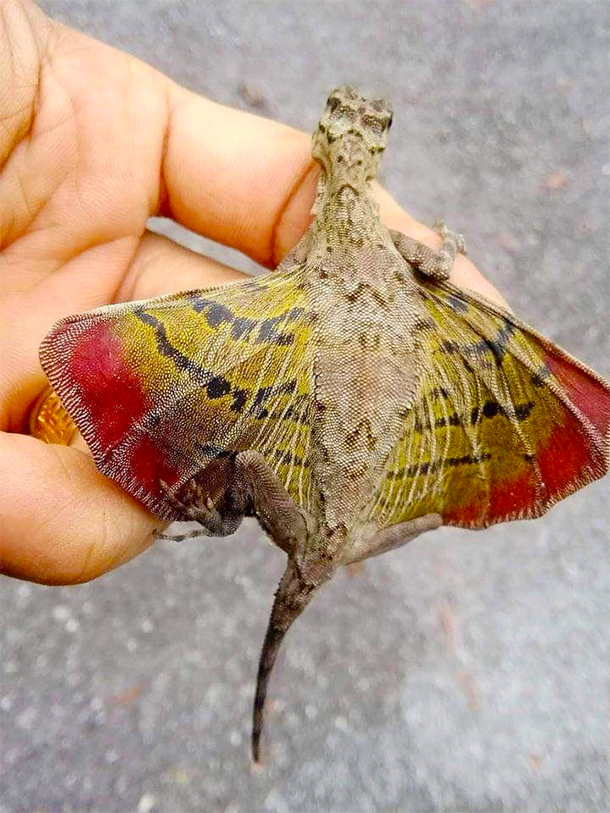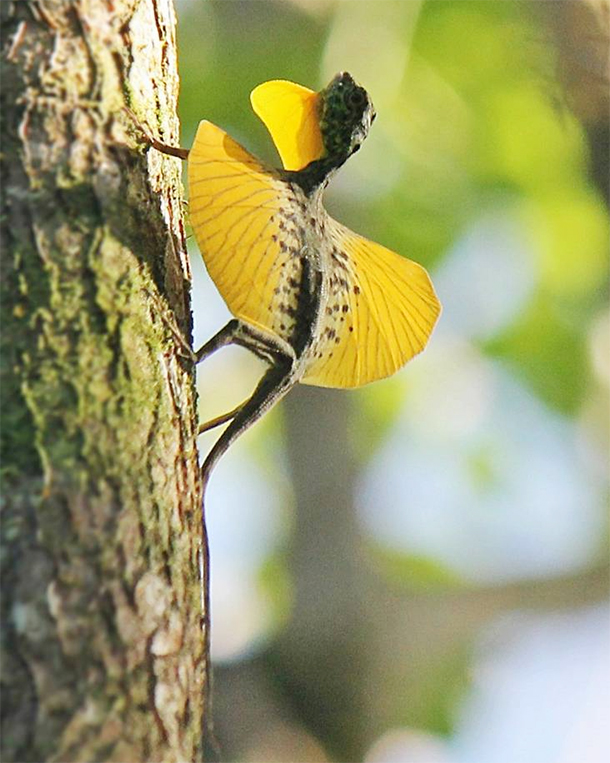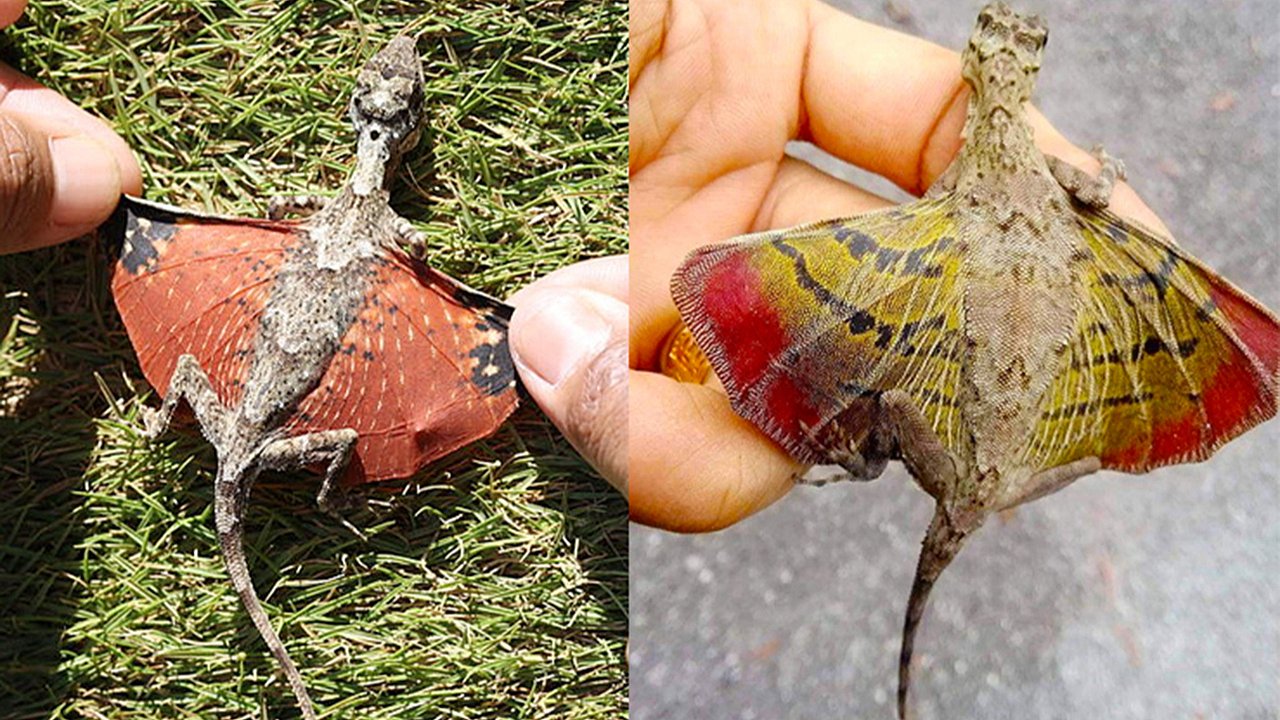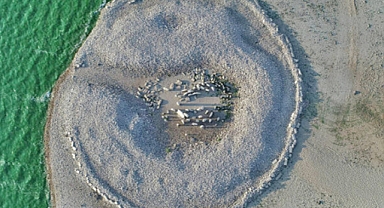Nature’s Own Dragon: The Flying LizardBelonging to the Agamidae family, flying dragons (Draco) inhabit the dense tropical forests of Southeast Asia. These remarkable lizards measure around 8 to 10 inches in length and are equipped with wing-like membranes along the sides of their bodies. These adaptations allow them to glide effortlessly between trees, covering distances of up to 60 meters while losing only 10 meters in altitude. Diet and Lifestyle
Diet and Lifestyle
Flying dragons primarily feed on insects, with tree ants being a staple in their diet. They are arboreal creatures, meaning they rarely descend to the forest floor. However, there is one exception—mating season.
The Mating Ritual and Reproduction ProcessDuring the breeding season, males use their strikingly colorful wing-like membranes to attract females. Once a mate is found, the reproduction process begins. After mating, the female descends to the forest floor, where she digs a small hole and lays around 4 to 5 eggs. She covers them with soil and leaves for protection but remains with them for only 24 hours before returning to the trees, leaving the eggs to develop independently.A Diverse Beauty
Flying dragons exhibit a variety of colors and patterns, which differ among species. However, they all share an otherworldly beauty that makes them one of nature’s most spectacular creatures. Their intricate designs and effortless gliding ability make them a true wonder of evolution.
Nature is full of surprises, and the flying dragon is one of its most astonishing creations. Though they may not breathe fire or hoard treasure, these real-life dragons are living proof that reality can be just as magical as mythology.
 Diet and Lifestyle
Diet and LifestyleFlying dragons primarily feed on insects, with tree ants being a staple in their diet. They are arboreal creatures, meaning they rarely descend to the forest floor. However, there is one exception—mating season.

The Mating Ritual and Reproduction ProcessDuring the breeding season, males use their strikingly colorful wing-like membranes to attract females. Once a mate is found, the reproduction process begins. After mating, the female descends to the forest floor, where she digs a small hole and lays around 4 to 5 eggs. She covers them with soil and leaves for protection but remains with them for only 24 hours before returning to the trees, leaving the eggs to develop independently.A Diverse Beauty
Flying dragons exhibit a variety of colors and patterns, which differ among species. However, they all share an otherworldly beauty that makes them one of nature’s most spectacular creatures. Their intricate designs and effortless gliding ability make them a true wonder of evolution.

Nature is full of surprises, and the flying dragon is one of its most astonishing creations. Though they may not breathe fire or hoard treasure, these real-life dragons are living proof that reality can be just as magical as mythology.







